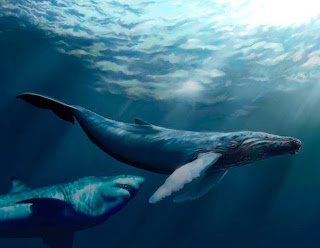Megalodon is an extinct species of shark that lived approximately 28 to 1.5 million years ago, during the Cenozoic Era (late Oligocene to early Pleistocene). The taxonomic assignment of C. megalodon has been debated for nearly a century, and is still under dispute. The two major interpretations are Carcharodon megalodon (under family Lamnidae) or Carcharocles megalodon (under family Otodontidae).
Consequently, the scientific name of this species is commonly abbreviated C. megalodon in the literature. C. megalodon is regarded as one of the largest and most powerful predators in vertebrate history, and likely had a profound impact on the structure of marine communities. Fossil remains suggest that this giant shark reached a maximum length of 14-18 metres (46-59 ft), and also affirm that it had a cosmopolitan distribution.
Swiss naturalist Louis Agassiz gave the shark its initial scientific name, Carcharodon megalodon, in 1835, in his research work Recherches sur les poissons fossiles (Research on fossil fish), which he completed in 1843. Megalodon teeth are morphologically similar to the teeth of the great white shark. On the basis of this observation, Agassiz assigned megalodon to the genus Carcharodon.
Among extant species, the great white shark is regarded as the best analogue to megalodon. The lack of well-preserved fossil megalodon skeletons led scientists to rely on the great white shark as the basis of its reconstruction and size estimation. Due to fragmentary remains, estimating the size of C. megalodon has been challenging. However, the scientific community has concluded that C. megalodon was larger than the whale shark, Rhincodon typus.
The first attempt to reconstruct a megalodon jaw was made by Bashford Dean in 1909. From the dimensions of this jaw reconstruction, it was hypothesized that C. megalodon could have approached 30 metres (98 ft). Better knowledge of dentition and more accurate muscle structures, led to a rectified version of Dean's jaw model about 70 percent of its original size and to a size consistent with modern findings.



